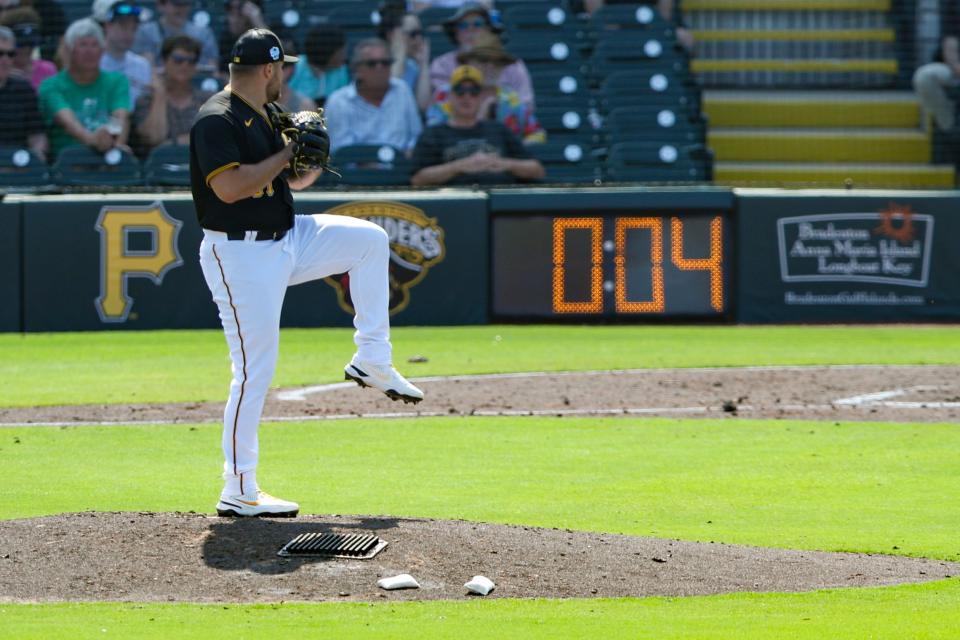MIAMI — Major League Baseball, after listening to input from players and managers, made a series of adjustments to their new rules that will go into effect this year, but the pitch clock remains the same, according to a memo sent to clubs Wednesday morning that was obtained by USA TODAY Sports.
The clarifications were made largely to prevent clubs from circumventing rules on instant replays involving the shift, fake PitchCom malfunctions, providing hitters time to collect themselves after being knocked down or taking a particularly large cut, and reducing an advantage pitchers could have after a batter timeout .
It will be the final modifications made before Opening Day, vice president Mike Hill told GMs in the memo.
Certainly, MLB is encouraged by players adapting to the changes this spring. Rule violations have dropped from 2.03 per game in the first week of spring training to 1.03 per game this past week. Game times have also plummeted from 3:01 to 2:26, although last spring was different considering players had just three weeks of spring training because of the lockout.
Now, after a month of spring training games and Opening Day just eight days away, MLB wanted to make sure there were no loopholes.
MLB officials, worried that teams could try to circumvent the new rules by creating more time for their pitchers, are now preventing managers from needlessly holding up play. They can challenge an illegal shift only if the play directly involves the player fielding the ball.
MLB also is cracking down on pitchers who may deliberately forget their PitchCom device on the bench to start an inning. Time will be called if the device malfunctions, but if the pitcher simply comes to the mound without the device, there will be no extra time allotted.

The biggest clarification involves the hitter. The field timer now will delay starting the clock if a hitter is not only knocked down by a pitch, but if he takes an aggressive swing, causing him to fall down or lose his helmet.
Hitters will also now be able to determine when to start the clock if he uses one of his allotted timeouts. Instead of the timer automatically re-setting at 15 or 20 seconds, allowing the pitcher to hold the ball as long as he chose, the hitters can decide when the clock starts.
Pitchers will continue to get extra time to return to their position if they back up home, first or third base, with the timer not starting until he reaches the infield grass.
The catcher also will receive additional time if an inning ends when he’s on base, at bat, or in the on-deck circle, but the new element provides the catcher to have one warm-up throw to second before the clock starts.
The memo also instructs batboys and batgirls to have a player’s bat ready if he’s due up to lead off an inning.
There could be additional modification once the season starts, commissioner Rob Manfred said, but will wait to see how the new rules play out.
“On one hand, we are prepared to make adjustments based on input,” Manfred said. “On the other hand, we want to give it a chance to see how it plays out exactly over a period of adjustment in some regular-season games before we make any significant alterations.”
Follow Bob Nightengale on Twitter: @Bnightengale
This article originally appeared on USA TODAY: MLB details adjustments to new pitch clock rules, closing loopholes